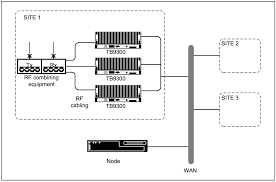What Is NGAP? Next-Generation Application Protocol over the N2 Interface Explained
telcomatraining.com – The Next-Generation Application Protocol (NGAP) is a critical component in the 5G system architecture. It facilitates signaling between the gNodeB (gNB), which is the 5G base station, and the Access and Mobility Management Function (AMF) in the core network. This communication occurs over the N2 interface, playing a pivotal role in session management, mobility handling, and network resource control.
Understanding NGAP in 5G
NGAP is part of the Service-Based Architecture (SBA) introduced in 5G to enhance modularity, scalability, and flexibility. It is defined by the 3rd Generation Partnership Project (3GPP) in TS 38.413. Unlike LTE’s S1 Application Protocol (S1AP), NGAP has been restructured to support the distinct capabilities and requirements of 5G, such as network slicing, ultra-low latency, and enhanced mobility.
The N2 interface where NGAP operates connects the gNB (access network) with the AMF (core network). This interface supports control-plane signaling only, while the data-plane uses the N3 interface, which connects the gNB to the User Plane Function (UPF).
Key Functions of NGAP
NGAP is responsible for several critical control functions within the 5G core:
- UE Context Management
NGAP maintains and manages the context of each User Equipment (UE). It handles UE registration, context setup, and release procedures. - Paging and Mobility Management
It facilitates paging requests for idle UEs and supports procedures for UE mobility such as handovers and tracking area updates. - AMF Selection and Load Balancing
The protocol assists in selecting and changing AMFs based on load or service requirements, contributing to optimal resource utilization. - Security Procedures
NGAP initiates and manages security procedures such as authentication and integrity protection between the gNB and AMF. - Network Slicing Support
It supports 5G’s network slicing feature, allowing the network to allocate specific slices to different types of services or customers.
How NGAP Differs from S1AP
Although NGAP and S1AP share some structural similarities, they are designed for fundamentally different network architectures. NGAP includes advanced mechanisms tailored for 5G’s modular network functions, service-based architecture, and more sophisticated mobility models. It supports a more granular and dynamic signaling environment, enabling services like ultra-reliable low-latency communications (URLLC) and massive machine-type communications (mMTC).
NGAP Message Types
NGAP defines a set of messages that are grouped into procedures such as:
- Initial UE Message
- UE Context Setup Request
- UE Context Release Command
- Handover Required
- Downlink NAS Transport
Each of these message types corresponds to specific signaling actions needed to maintain connectivity, manage sessions, and support mobility.
Importance in Network Performance
By separating the control plane (NGAP over N2) from the user plane (GTP-U over N3), 5G allows for more flexible and scalable deployments. NGAP ensures that signaling information is managed efficiently, reducing latency and supporting a wide range of applications — from autonomous vehicles to smart city infrastructure.
Conclusion
The Next-Generation Application Protocol (NGAP) is a foundational element of the 5G system architecture. Operating over the N2 interface, NGAP enables robust, secure, and efficient communication between the gNB and the AMF. With its support for network slicing, enhanced mobility management, and modular architecture, NGAP is tailored to meet the diverse and demanding needs of 5G networks. As 5G continues to evolve, NGAP will remain a key enabler of the intelligent, high-speed mobile networks of the future.







